LG G4 review
LG G4 Review

Introduction
Flagships get better with every generation but some of last year's are as good as reborn. The LG G4 improves on the three best features of its predecessor: design, screen, the camera - and does so decisively. It adopts a G Flex curve, but makes it its own with an optional stitched leather back, and has what may as well be the most advanced camera module on a phone yet.

The camera really is the new phone's key feature. LG picked a new 16MP sensor, improved the optical stabilization, gave it a wider aperture lens, added a handful of new software features (including manual mode) and placed a top-notch selfie camera on the front. A complete overhaul of the imaging department.
LG designers were hard at work too. They gave the
LG G4 a subtle arc that complements the spacious screen and sourced high-quality materials for the back covers. The premium option is made of genuine full grain leather with threads imported from Germany used on the decorative stitching. Even the basic backs are far from plain - the white one has ceramic coating.
The LG G4 strikes a great balance between tangible quality and intangible class. Here's how the hardware capabilities and the premium exterior balance out, plus what the G4 offers over its predecessor.
Key features
- Subtly curved design with optional leather backs
- 5.5" QHD (1440 x 2560px) Quantum Display IPS LCD, 534ppi, Gorilla Glass 3
- Android 5.1 Lollipop with the latest LG UX v4.0
- Qualcomm Snapdragon 808 chipset with hex-core processor (dual Cortex-A57 @ 1.82GHz, quad A53 @ 1.44GHz), Adreno 418 GPU and 3GB of RAM
- 16MP camera, phase detection/laser autofocus, dual-LED (dual tone) flash, OIS, 2160p video recording
- 8MP front-facing camera, 1080p video recording
- 32GB of built-in storage, expandable via a microSD card slot
- Active noise cancellation with a secondary microphone
- Dolby mobile sound enhancement
- 3,000mAh user-replaceable battery
- microUSB 2.0 with SlimPort 4K
- IR-port and NFC
Main disadvantages
- Chipset isn't top of the range
- No IP-certification for dust or water resistance
- No Quick Charge charger in the bo
Compared to LG G3
- Much improved imaging (both front and rear cameras)
- Noticeably faster chipset
- Screen has higher contrast and brightness
- Slightly bigger
The screen is LG's own creation as none of the top display manufacturers had what the G4 needed. The company calls it a "Quantum Display," not be confused with Sony's quantum dot screens. LG says it's actually better. The new components reduce power usage, while improving brightness and contrast. Better color accuracy is promised as well.
So, should other smartphone makers pack up and go home? Users campaigning for removable batteries and expandable storage are nodding in agreement, but a chipset that's only second-best may be raising a few eyebrows. The thing is, early benchmarks showed that Snapdragon 808 is quite capable of competing with the 810. Either way, the performance of the latest Snapdragons is a sore issue so we'll pay special attention to that.
Before we delve into the hardware, a quick preview of how the LG G3 compares to its replacement. LG's new screen resolves our complaints about contrast from last year the camera comparison is a cakewalk for the newcomer. The performance gains are not as readily visible though. But benchmark-topper or not, the LG G4 won't have to ask for anyone's attention.
The new Quantum Display is similar to Sony's Triluminos display, both companies competing in the TV panel business. LG turned to DCI (which normally works with TV studios) to calibrate the LG G4 display, achieving 98% coverage of the DCI standard, which means accurate colors with no oversaturation.
If anything, lack of saturation was the problem with LG G3's screen, colors looked dull in comparison. The other major issue was the contrast, which was quite low.
The Quantum Display fixes both of those niggles. Colors are vivid (but not oversaturated) and viewing angles are perfect. The display is marginally dimmer (hard to notice without measurement equipment), but black levels went down which pushed contrast way up.
We have one complaint here - the brightness slider isn't smooth, at 50% it's barely 110nit, which is too dim for daily use. Going lower than 50% is as good as switching off the screen.
While brightness is basically the same, the new screen is less reflective, which improved sunlight legibility enough to match the HTC One M9. It's pretty far from other current flagships though
Wi-Fi 802.11ac is no surprise, you can use the latest Wi-Fi routers at home at either 2.4GHz or 5GHz. There's also Bluetooth 4.1 with Low Energy mode and apt-X for better audio streaming.
NFC is on board as well. For file sharing you can use ShareBeam, which is LG's take on Android Beam.
For wireless multimedia streaming there's DLNA and Miracast (which can mirror your phone's screen). There's also the wired option with SlimPort 4K, which lives in the microUSB 2.0 port.
For old-school TVs you can use the IR blaster and QRemote. The app can also control audio equipment, projectors and air conditioners.
The Endurance rating worked out to 54 hours, 9 hours less than the G3. The issue was with the high standby power draw, which puts a strain on the battery even when you're not using the phone. The other disappointment was the talk time, which couldn't reach 17 hours - an 8 hour drop from the G3.
We reran the tests several times and kept getting the same results. The LG G Flex2 got basically the same results so we wonder how much responsibility Qualcomm shoulders for the lackluster battery life.
Anyway, the web browsing time was pretty good - nothing spectacular, but good. It also marks the only improvement since the G3 as the video playback is below average for the flagship class.
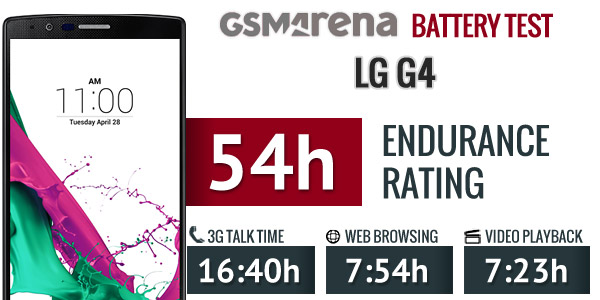
The LG G4 may have the most advanced camera on the market right now, the company has updated basically every component. It starts off with a bigger 1/2.6" sensor with 16MP resolution. It's positioned behind a wider f/1.8 lens, which lets 80% more light in compared to the LG G3.

The company has also updated the optical image stabilization, which now works on three axis (up from two). LG's Laser autofocus is back, but there's a new addition - the Color Spectrum Sensor. It detects ambient light for more accurate white balance.
The software has been improved to match the impressive hardware. The LG G4 offers three shooting modes - Simple, Basic and Manual. The first is plain point & shoot with no options, then Basic gives you the usual phone camera options and finally Manual gives you full control of the capable camera.
This includes focus, shutter speed, exposure and ISO and you get a histogram to aid you while adjusting the settings. There's an Auto Exposure lock too. If you want to do adjustments after taking the shot, you can enable the DNG RAW option.
Compared to the LG G3, the new camera sensor has a 16:9 aspect ratio meaning it captures more horizontally (but less vertically). The improvement in image quality is the other thing immediately noticeable.
You don't even have to go to 100% zoom, the LG G4 camera has noticeably better dynamic range and captures detail in the shadows while keeping the highlights from getting overexposed. The colors are more true to life as well.
Once we do get to looking at the pixel level, the higher resolution offers some advantage, but really the amount of captured detail is much higher than the extra 3MP suggest. There's less noise in photos and the camera doesn't sharpen them as much.
We had some issues with missed focus though and several of our shots were out of focus when we came back to the office after an outing for camera samples.






LG G4 camera samples
Having a wide f/1.8 aperture means you can get some sepparation between your subject and the background. The blurred area (or bokeh) is most pronounced when you're shooting the subject from a closer distance (macro). Take a look at the bokeh you can expect of the LG G4's camera.

Depth of field from the f/1.8 aperture
Enabling HDR mode doesn't do much for the actual dynamic range. It seems to reduce the contrast and saturation more than anything. The images also come out softer since they are composed of multiple shots and the software doesn't align them perfectly.
For some reason the updated LG G4 produced blurry HDR images more than half of the time. We suppose this could be a software issue that is limited to our unit as we did get HDR shots in perfect focus (such as the one below).


HDR OFF • HDR ON
The updated LG G4 unit produced noticeably more colorful images and a warmer tone. We'd say the color profile has gotten more unrealistic but does make for punchier images compared to the LG G4 we tested erlier.
Otherwise the detail levels, sharpness, noise and processing all look the same. You can do some pixel-peeping yourselves if you like.




LG G4 after (left) and before (right) the update
The LG G4's 8MP selfie should easily outclass the 2MP shooter of the G3. It is slightly wider, allowing you to capture more of the scene behind you and it has a better dynamic range. It does capture more detail too, though the difference is much smaller than the resolution advantage suggests. The white balance is warmer though not perfectly accurate without the benefit of the spectrum sensor.
Panoramas are nothing short of stunning, LG's updated software (with the help of the new chipset) can stitch an image up to 104MP resolution. The vertical resolution is over 5,000px, that's more than would fit on a 4K TV! The stitching is seamless, even up close, and the image maintains an even exposure across the whole frame.
Of course, with an aperture like this the LG G4's true strength becomes apparent only after dark. The camera dials the noise reduction all the way down, resulting in a lot of visible noise at 100%. This does preserve a good deal more detail than the G3, which resorts to Night mode.
The G4 does not, it just shoots at 1/10s shutter speed and relies on the OIS to keep things steady. The bright lights of store windows are handled better too.
The build quality is top-notch and we think the phone looks great in leather. The plastic rear covers are not as impressive but by no means of poor quality. From experience with the Moto X, we're slightly concerned about how well the leather will hold up but if LG did it right, the G4 will age more gracefully. The phone fits well in the hand, the curved shape takes a while to notice but it does have a positive impact on the usability.
There's no question LG got the screen right - it's super sharp, contrast and black levels are great, colors are pleasing without overdoing it. Next to the LG G3 it's a massive improvement.

The choice of chipset seemed a bit controversial at first, but overall performance is as good as the Snapdragon 810 and a solid improvement over the previous model. One area where the LG G4 falls behind its flagship rivals is gaming - it's just too hard a challenge at native QHD resolution. Games will have to render at a lower resolution and upscale, which isn't the best use of this wonderful screen.
Finally, the camera is brilliant. It captures the scene in great detail, preserving both shadows and highlights and with accurate colors, too. The wide aperture and OIS help the phone do quite well in the dark. We had some photos off focus though. The panoramas turn out amazingly detailed.
Videos were good, they carry over the advantages of the still camera (dynamic range and accurate colors) though 2160p videos are a bit soft. The slow-mo videos were smooth but very low res.
The screen size was the same, though lower resolution (1080p) as the P-OLED panels are still maturing. It received the higher-end Snapdragon, which in the end doesn't make that much of a difference. The camera isn't as impressive, but a 13MP optically stabilized shooter with 2160p video capture is still pretty solid.
The old LG G3 is still a great phone and it's cheaper than its present day competitors. It has a 5.5" QHD screen (not as contrasty as we would have liked) and a very good camera too, you can go back to the camera section of this review for a direct comparison.
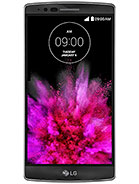
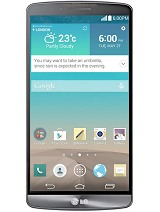
LG G Flex2 • LG G3
Samsung's Galaxy Note 4 and Note Edge have bigger QHD screens (demonstrating the best of AMOLED tech) and have impressive 16MP cameras of their own. They add a stylus to the split-screen multitasking and a PayPal-certified fingerprint sensor.
Real leather is not an option, but the frame is real metal and unlike the new Galaxy S6 you get access to the battery and a microSD slot.
The Galaxy Note Edge has a unique curve too, just the right side of the device instead of the whole thing. Yet, it has a much bigger impact on functionality than G4's curve by displaying various widgets, shortcuts and notifications there.
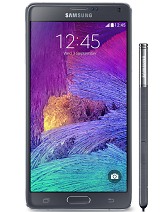
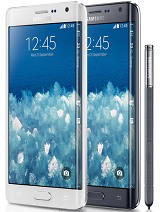
Samsung Galaxy Note 4 • Samsung Galaxy Note Edge
The Note pair is mirrored in the S line - Samsung has always had multiple versions of the flagship but, for the first time this season, the supposed spin-off ends up stealing the show. Samsung took a gamble but so did LG last year with the first QHD screen. The new Galaxy S6 design sacrificed the removable battery and microSD card slot. LG on the other hand didn't quite learn their lesson and the battery life of the G4 isn't any better than the G3's. At the end of the day though, Samsung's reboot against LG's refinement shapes up like the Android match of the season. You know you'd do well to watch this space for the head-to-head.
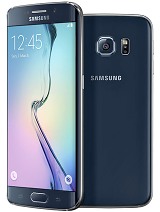
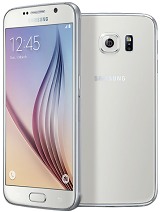
Samsung Galaxy S6 edge • Samsung Galaxy S6
The Apple iPhone 6 Plus is from a different planet but so mincingly relevant. Its all-metal unibody is impressively slim and of the usual exemplary build quality. The screen is one of the best in the business even if it's nowhere as sharp as the QHD lot.
Add in the fast, custom chipset and polished iOS software (no multitasking though) and you get a device that has been optimized for experience more than any other.

Apple iPhone 6 Plus
HTC launched a barrage of One M9 versions, the HTC One E9+ is the one with the 5.5" QHD screen. It borrows the 20MP main camera on the M9 but adds a 13MP/2160p selfie camera that outshines even G4's front shooter. HTC's trademark stereo speakers are on board, while the all-metal unibody gave way to a lighter metal frame/plastic back design.
The Motorola Nexus 6 also has a metal frame and an even larger 6" QHD screen. It brings basic water resistance to the mix, stereo speakers too, and its 13MP optically stabilized camera has a rare ring flash. The Snapdragon 805 chipset is a safer (perhaps wiser) choice and you get a guarantee for fresh software.
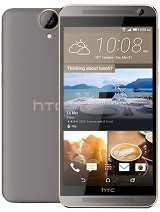
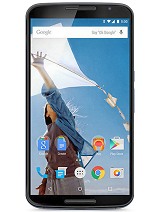
HTC One E9+ • Motorola Nexus 6
While other makers compete with glass and metal designs, LG settled on an organic design with a subtle curve and warm leather. You'll have a great time browsing the web and taking photos with the LG G4, then do some serious work on the roomy screen split between two apps. LG loyals will be pleased, while newcomers will certainly be impressed by what LG is capable of.
Display
LG caused a collective jaw drop last year when it announced that its new flagship phone will have a massive, incredibly sharp screen - 5.5" at QHD. It kept those measurements for 2015 (there's really no sane way to increase them further) and worked hard to improve the image quality.The new Quantum Display is similar to Sony's Triluminos display, both companies competing in the TV panel business. LG turned to DCI (which normally works with TV studios) to calibrate the LG G4 display, achieving 98% coverage of the DCI standard, which means accurate colors with no oversaturation.
If anything, lack of saturation was the problem with LG G3's screen, colors looked dull in comparison. The other major issue was the contrast, which was quite low.
The Quantum Display fixes both of those niggles. Colors are vivid (but not oversaturated) and viewing angles are perfect. The display is marginally dimmer (hard to notice without measurement equipment), but black levels went down which pushed contrast way up.
| Display test | 50% brightness | 100% brightness | ||||
| Black, cd/m2 | White, cd/m2 | Black, cd/m2 | White, cd/m2 | |||
| 0.09 | 108 | 1240 | 0.43 | 532 | 1238 | |
| 0.14 | 109 | 763 | 0.72 | 570 | 789 | |
| 0.17 | 208 | 1197 | 0.52 | 705 | 1361 | |
| 0 | 291 | ∞ | 0 | 399 | ∞ | |
| 0.39 | 317 | 805 | 0.75 | 598 | 799 | |
| 0 | 152 | ∞ | 0 | 398 | ∞ | |
| 0 | 149 | ∞ | 0 | 372 | ∞ | |
We have one complaint here - the brightness slider isn't smooth, at 50% it's barely 110nit, which is too dim for daily use. Going lower than 50% is as good as switching off the screen.
While brightness is basically the same, the new screen is less reflective, which improved sunlight legibility enough to match the HTC One M9. It's pretty far from other current flagships though
Sunlight contrast ratio
- Nokia 808 PureView 4.698
- Meizu MX4 2.366
- Motorola RAZR i 2.366
- Meizu m1 note 2.362
- Sony Xperia ZL 2.352
- HTC One M9 2.334
- LG G4 2.317
- HTC One (M8) for Windows 2.291
- Oppo Find 7a 2.279
- Alcatel One Touch Hero 2.272
- Apple iPhone 4S 2.269
- HTC Desire 600 dual sim 2.262
- Samsung Galaxy mini 2 1.114
Connectivity
The LG G4 comes with the full connectivity suite. It has 4G LTE for up to 300Mbps of download and up to 50Mbps of upload and 3G HSPA+ (42.2Mbps/5.76Mbps) when you're outside of 4G coverage.Wi-Fi 802.11ac is no surprise, you can use the latest Wi-Fi routers at home at either 2.4GHz or 5GHz. There's also Bluetooth 4.1 with Low Energy mode and apt-X for better audio streaming.
NFC is on board as well. For file sharing you can use ShareBeam, which is LG's take on Android Beam.
For wireless multimedia streaming there's DLNA and Miracast (which can mirror your phone's screen). There's also the wired option with SlimPort 4K, which lives in the microUSB 2.0 port.
For old-school TVs you can use the IR blaster and QRemote. The app can also control audio equipment, projectors and air conditioners.
Battery life
The LG G4 comes with a 3,000mAh battery - the same capacity as the G3 and the G2 before it. The G2 was a battery life king, but the G3 was quite average. Our tests show that the LG G4 also fails to recoup the G-series former glory.The Endurance rating worked out to 54 hours, 9 hours less than the G3. The issue was with the high standby power draw, which puts a strain on the battery even when you're not using the phone. The other disappointment was the talk time, which couldn't reach 17 hours - an 8 hour drop from the G3.
We reran the tests several times and kept getting the same results. The LG G Flex2 got basically the same results so we wonder how much responsibility Qualcomm shoulders for the lackluster battery life.
Anyway, the web browsing time was pretty good - nothing spectacular, but good. It also marks the only improvement since the G3 as the video playback is below average for the flagship class.

The LG G4 may have the most advanced camera on the market right now, the company has updated basically every component. It starts off with a bigger 1/2.6" sensor with 16MP resolution. It's positioned behind a wider f/1.8 lens, which lets 80% more light in compared to the LG G3.

The company has also updated the optical image stabilization, which now works on three axis (up from two). LG's Laser autofocus is back, but there's a new addition - the Color Spectrum Sensor. It detects ambient light for more accurate white balance.
The software has been improved to match the impressive hardware. The LG G4 offers three shooting modes - Simple, Basic and Manual. The first is plain point & shoot with no options, then Basic gives you the usual phone camera options and finally Manual gives you full control of the capable camera.
This includes focus, shutter speed, exposure and ISO and you get a histogram to aid you while adjusting the settings. There's an Auto Exposure lock too. If you want to do adjustments after taking the shot, you can enable the DNG RAW option.
Compared to the LG G3, the new camera sensor has a 16:9 aspect ratio meaning it captures more horizontally (but less vertically). The improvement in image quality is the other thing immediately noticeable.
You don't even have to go to 100% zoom, the LG G4 camera has noticeably better dynamic range and captures detail in the shadows while keeping the highlights from getting overexposed. The colors are more true to life as well.
Once we do get to looking at the pixel level, the higher resolution offers some advantage, but really the amount of captured detail is much higher than the extra 3MP suggest. There's less noise in photos and the camera doesn't sharpen them as much.
We had some issues with missed focus though and several of our shots were out of focus when we came back to the office after an outing for camera samples.






LG G4 camera samples
Having a wide f/1.8 aperture means you can get some sepparation between your subject and the background. The blurred area (or bokeh) is most pronounced when you're shooting the subject from a closer distance (macro). Take a look at the bokeh you can expect of the LG G4's camera.


Depth of field from the f/1.8 aperture
Enabling HDR mode doesn't do much for the actual dynamic range. It seems to reduce the contrast and saturation more than anything. The images also come out softer since they are composed of multiple shots and the software doesn't align them perfectly.
For some reason the updated LG G4 produced blurry HDR images more than half of the time. We suppose this could be a software issue that is limited to our unit as we did get HDR shots in perfect focus (such as the one below).


HDR OFF • HDR ON
The updated LG G4 unit produced noticeably more colorful images and a warmer tone. We'd say the color profile has gotten more unrealistic but does make for punchier images compared to the LG G4 we tested erlier.
Otherwise the detail levels, sharpness, noise and processing all look the same. You can do some pixel-peeping yourselves if you like.




LG G4 after (left) and before (right) the update
The LG G4's 8MP selfie should easily outclass the 2MP shooter of the G3. It is slightly wider, allowing you to capture more of the scene behind you and it has a better dynamic range. It does capture more detail too, though the difference is much smaller than the resolution advantage suggests. The white balance is warmer though not perfectly accurate without the benefit of the spectrum sensor.
Panoramas are nothing short of stunning, LG's updated software (with the help of the new chipset) can stitch an image up to 104MP resolution. The vertical resolution is over 5,000px, that's more than would fit on a 4K TV! The stitching is seamless, even up close, and the image maintains an even exposure across the whole frame.
Of course, with an aperture like this the LG G4's true strength becomes apparent only after dark. The camera dials the noise reduction all the way down, resulting in a lot of visible noise at 100%. This does preserve a good deal more detail than the G3, which resorts to Night mode.
The G4 does not, it just shoots at 1/10s shutter speed and relies on the OIS to keep things steady. The bright lights of store windows are handled better too.
Final words
Two years ago, LG took a chance and surprised everyone with the G2. The G3 upped the ante and the G4 makes it a streak. LG's top offering mixes unique design with unique features in a winning combination.The build quality is top-notch and we think the phone looks great in leather. The plastic rear covers are not as impressive but by no means of poor quality. From experience with the Moto X, we're slightly concerned about how well the leather will hold up but if LG did it right, the G4 will age more gracefully. The phone fits well in the hand, the curved shape takes a while to notice but it does have a positive impact on the usability.
There's no question LG got the screen right - it's super sharp, contrast and black levels are great, colors are pleasing without overdoing it. Next to the LG G3 it's a massive improvement.

The choice of chipset seemed a bit controversial at first, but overall performance is as good as the Snapdragon 810 and a solid improvement over the previous model. One area where the LG G4 falls behind its flagship rivals is gaming - it's just too hard a challenge at native QHD resolution. Games will have to render at a lower resolution and upscale, which isn't the best use of this wonderful screen.
Finally, the camera is brilliant. It captures the scene in great detail, preserving both shadows and highlights and with accurate colors, too. The wide aperture and OIS help the phone do quite well in the dark. We had some photos off focus though. The panoramas turn out amazingly detailed.
Videos were good, they carry over the advantages of the still camera (dynamic range and accurate colors) though 2160p videos are a bit soft. The slow-mo videos were smooth but very low res.
LG G4 key test findings:
- The phone offers great build quality and handling
- The plastic backs are a bit disappointing, the leather ones look great. The only question is how quickly they will age
- Exchangeable backs, batteries and expandable storage will extend the phone's life
- The Quantum Display improved in all the right places - color saturation and contrast - but isn't much brighter than G3's screen
- Battery life is only average - web browsing is better than on the G3, but standby draw brings the overall endurance down
- Android Lollipop with LG UX is fluid and responsive, with great features such as dual-window and QRemote
- The Snapdragon 808 is often as fast as the 810, but shows only a small improvement over the LG G3 at gaming
- The loudspeaker is great for notifications and music, but it's a bit quiet for voice calls
- Video player has impressively wide video decoder support, as well as seamless 4K video playback
- Audio output quality is very good if not quite the best among flagships
- Camera offers great dynamic range, plenty of detail and accurate colors. Low light shots are noisy, but detailed. Beware of the occasional missed focus though
- Videos recording quality is a mixed bag - 2160p videos are a bit soft, the 120fps mode is too pixelated
The screen size was the same, though lower resolution (1080p) as the P-OLED panels are still maturing. It received the higher-end Snapdragon, which in the end doesn't make that much of a difference. The camera isn't as impressive, but a 13MP optically stabilized shooter with 2160p video capture is still pretty solid.
The old LG G3 is still a great phone and it's cheaper than its present day competitors. It has a 5.5" QHD screen (not as contrasty as we would have liked) and a very good camera too, you can go back to the camera section of this review for a direct comparison.


LG G Flex2 • LG G3
Samsung's Galaxy Note 4 and Note Edge have bigger QHD screens (demonstrating the best of AMOLED tech) and have impressive 16MP cameras of their own. They add a stylus to the split-screen multitasking and a PayPal-certified fingerprint sensor.
Real leather is not an option, but the frame is real metal and unlike the new Galaxy S6 you get access to the battery and a microSD slot.
The Galaxy Note Edge has a unique curve too, just the right side of the device instead of the whole thing. Yet, it has a much bigger impact on functionality than G4's curve by displaying various widgets, shortcuts and notifications there.


Samsung Galaxy Note 4 • Samsung Galaxy Note Edge
The Note pair is mirrored in the S line - Samsung has always had multiple versions of the flagship but, for the first time this season, the supposed spin-off ends up stealing the show. Samsung took a gamble but so did LG last year with the first QHD screen. The new Galaxy S6 design sacrificed the removable battery and microSD card slot. LG on the other hand didn't quite learn their lesson and the battery life of the G4 isn't any better than the G3's. At the end of the day though, Samsung's reboot against LG's refinement shapes up like the Android match of the season. You know you'd do well to watch this space for the head-to-head.


Samsung Galaxy S6 edge • Samsung Galaxy S6
The Apple iPhone 6 Plus is from a different planet but so mincingly relevant. Its all-metal unibody is impressively slim and of the usual exemplary build quality. The screen is one of the best in the business even if it's nowhere as sharp as the QHD lot.
Add in the fast, custom chipset and polished iOS software (no multitasking though) and you get a device that has been optimized for experience more than any other.

Apple iPhone 6 Plus
HTC launched a barrage of One M9 versions, the HTC One E9+ is the one with the 5.5" QHD screen. It borrows the 20MP main camera on the M9 but adds a 13MP/2160p selfie camera that outshines even G4's front shooter. HTC's trademark stereo speakers are on board, while the all-metal unibody gave way to a lighter metal frame/plastic back design.
The Motorola Nexus 6 also has a metal frame and an even larger 6" QHD screen. It brings basic water resistance to the mix, stereo speakers too, and its 13MP optically stabilized camera has a rare ring flash. The Snapdragon 805 chipset is a safer (perhaps wiser) choice and you get a guarantee for fresh software.


HTC One E9+ • Motorola Nexus 6
While other makers compete with glass and metal designs, LG settled on an organic design with a subtle curve and warm leather. You'll have a great time browsing the web and taking photos with the LG G4, then do some serious work on the roomy screen split between two apps. LG loyals will be pleased, while newcomers will certainly be impressed by what LG is capable of.
Subscribe to:
Post Comments
(
Atom
)



















No comments :
Post a Comment